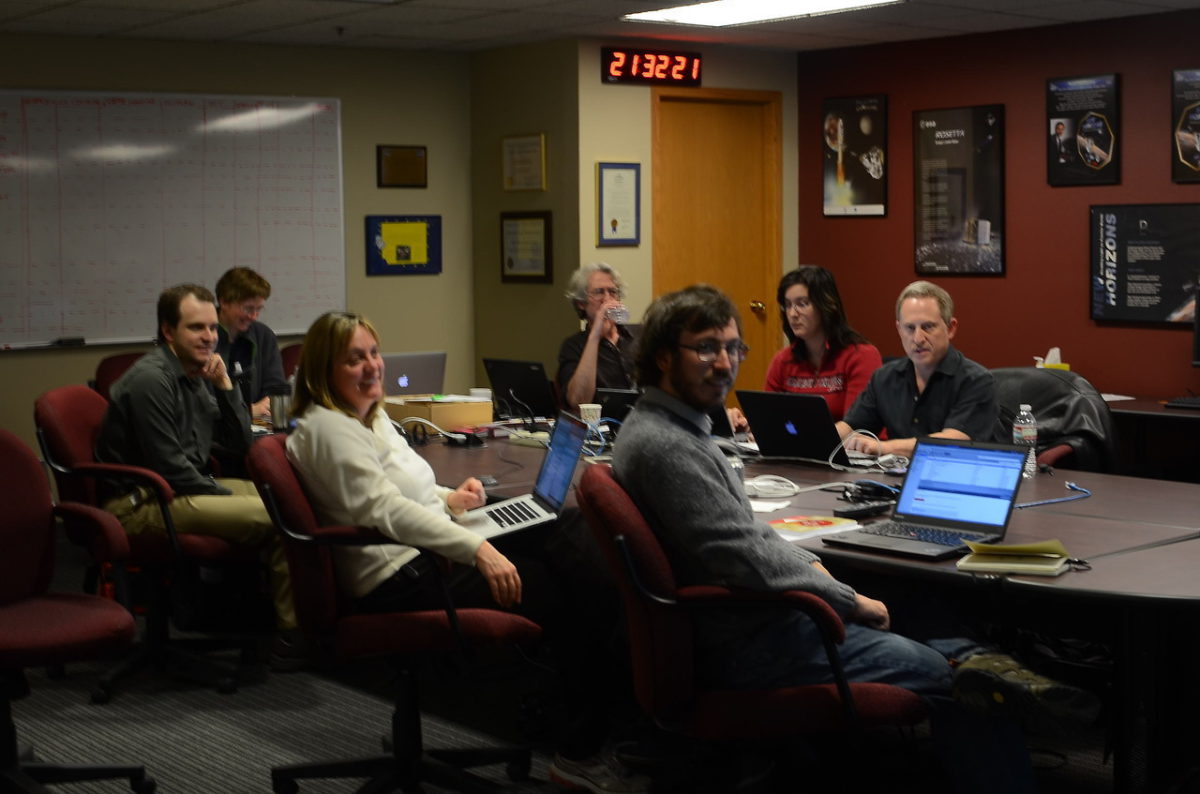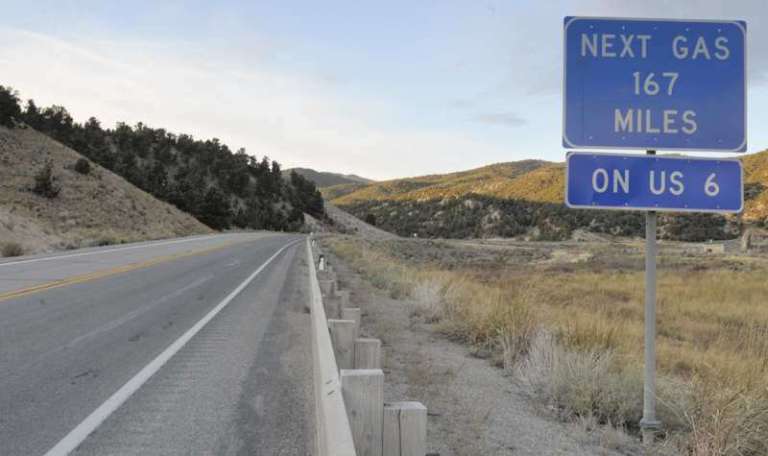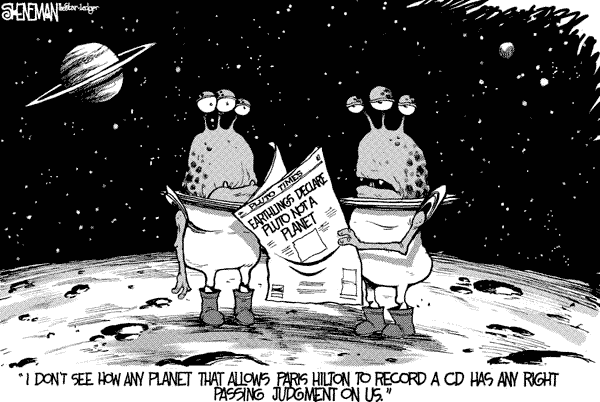Amanda Zangari • Mar 12, 2014
Postcards from Pluto
Editor's note: Amanda Zangari started a Tumblr called "Postcards from Pluto" in which she plans to share short updates about the day-to-day workings of the New Horizons missions on a roughly weekly basis through next year's encounter. With Amanda's permission, we will be collecting a few at a time and posting them here to provide inside updates on the mission to Planetary Society blog readers, but if you want the freshest scoop, visit the Tumblr! --ESL
My name is Amanda Zangari. I studied astrophysics at Wellesley College and then went to graduate school at MIT. I graduated from MIT in June 2013 with a PhD in Planetary Science. My dissertation was about Pluto and I traveled all over the world in search of data on Pluto's atmosphere, but generally found I am a magnet for terrible weather here on Earth.
Currently, I'm a Postdoctoral Researcher who's been with working with NASA's New Horizons mission since July, 2013. I work for Alan Stern, the mission Principal Investigator, who has been running the mission. Before that, he had been trying to talk NASA into going to Pluto since before I was even in kindergarten. The fact that postdocs like me just get to show up two years before flyby and enjoy the juicy data almost right away is sometimes a bit of a sore point with him. Like many other scientists with this mission, I'm based at Southwest Research Institute.
On July 14, 2015, the New Horizons spacecraft will fly past the Pluto-Charon system. This is the first spacecraft to fly by Pluto, and unlike missions that could fly to Mars, or Jupiter, or Saturn or Europa, or just about anywhere else among the planets, we don't already know what Pluto looks like, unless you count grainy 11 pixel pictures from the Hubble Space Telescope. New Horizons is going to bring back pictures of a world humanity has never seen before!
As a postdoc for the mission, I do lots of different jobs, from Pluto science, to testing software, to encounter planning, to things even I don't know about yet. Hey, I only started this job 8 months ago!
One thing that surprises me is just how much work and planning it takes to run a spacecraft, even one that takes 9.5 years to get to its destination. No one's twiddling their thumbs around here.
I've started this tumblr to share what it's like to be a scientist on New Horizons, and explain some of the day to day workings of what we do. I hope to give short, updates like this about once a week through encounter, hence the "postcards" title.
March 2, 2014...
Don't get me wrong, I like my job. However, the worst part of telling people that I work on Pluto is the immediate follow-up: is it a planet? Unfortunately, the only thing most people know about Pluto is that the IAU decided it should be categorized as a dwarf planet in 2006. While there are a lot of things wrong with the IAU definition (those 700+ new planets announced by the Kepler team this week? Not actually planets according to the IAU, sorry), I think the discussion about planethood can overshadow how interesting Pluto is. The following are some questions I'd much rather you ask me about Pluto:
Some of these questions have answers and some are still waiting on good old New Horizons, but I'll try to answer some of them over the next few weeks. Next week I'll be attending a few monthly status meetings at APL, so I plan to blog about that.

March 5, 2014...
Today was the Principal Investigator's Mission Review, a.k.a. the PIMR. It's the first of two all-day info dumps that I'll be attending this week. Ordinarily, a bunch of us would fly out to the Johns Hopkins Applied Physics Laboratory and conduct the multi-day meetings where everyone could talk in person, but thanks to East Coast snow earlier in the week, today's meeting happened over the speakerphone.
We started off the meeting with an overview of all upcoming meetings (Yo dawg, I heard you like meetings, so let's have a meeting where we can discuss all the meetings we have) and public shaming of the folks with too many outstanding project duties (you know who you are). In the course of the day, the suggestion of having fewer meetings was floated, but as the day went on, other people were like "we need to have another meeting for this." I'm not making this up.
The very long day mostly consists of reports from people in charge of different systems giving status updates, everything from Power to Mission Operations to the IT department on on the ground. It's a whirlwind of topics, ideas, jargons and acronyms. I've been working on the mission for a little over six months and I still don't have a handle on the insane amount of groups, and systems involved with making a trip to Pluto happen, but I'd say I followed more of this meeting than any of the previous ones.
If I had to make a theme for this meeting, I would call it "Things We Are Worried About." We even have a disaster chart that mimics the Torino scale for Earth-killing asteroids. Our chart says how badly a disaster could break the mission on one side, and how likely it is to happen on the other. We are less worried about things that probably won't happen or things that could happen, but can be worked around.
An example of something really bad, but really unlikely is if both Inertial Measurement Units break. We have two IMUs and their job is to hold the spacecraft still. If both break, we're screwed, but if just one IMU breaks, there's a plan to work around it.
Right now, by far the scariest thing facing our mission, both very likely and very bad, is that a Kuiper belt target that New Horizons could reach after flying by Pluto either isn't out there or we can't find it in time.
We also had updates on our natural disaster plan. You might think that it's pretty silly to have a contingency plan for a badly-timed, highly unlikely natural disaster, but last September, Boulder, Colorado got a year's worth of rain in less than one week. I can think of at least two New Horizons team members whose homes were damaged and many roads and bridges were washed away. While the network at Southwest did not go down, we were barred from coming into the building and people who were out of town didn't get back home for days. We're making sure that our computers are not all in the same building at APL, and there are other computers in different weather areas in case of a giant killer hurricane. We are not the sort of people who think bad weather can't happen to us.
Despite all these scary things that could go wrong on a spacecraft that we can't fly out and fix, and the fact that our hardware has to work flawlessly 9.5 years after launch, our payload is reported to be in good condition.
I find it pretty amazing how many things have to go right for the encounter to happen. Tomorrow's meeting will be more focused on encounter planning.

March 12, 2014...
Let's back up a bit.
On the second Monday morning of every month, we have the all-hands Pluto Encounter Planning meeting. Today's topic was the new 15174 load.
What's a 15174 load? Well, a load is a list of instructions sent to the spacecraft, that tells it what to do over a period of days. The spacecraft can hold two loads in its memory at once. We call this load 15174 because its instructions start at June 23, 2015, or the 174th day of '15. Using the day of year instead of a month/day is very common in spacecraft parlance, and it's no accident the first hit for "day of year calendar" on Google is a NASA page. This particular load spans the time from 21 days before encounter until 11 days before encounter.
And why is the 15174 load so special that it has been the darling of discussion at our PIMR, PEP, PIER, and the rest of the meeting alphabet soup? We've changed our minds about what should be going on during that time. Specifically, we've added two more chances to adjust our trajectory on Pluto approach, and a last-minute opportunity to search for hazards in the Pluto system. We've also decided to take some navigation images using MVIC (the four-color imager that's part of the Ralph instrument). MVIC isn't the best instrument to do navigation -- LORRI images have a smaller file size AND better resolution -- but it's our backup if LORRI breaks. We don't expect LORRI to fail, but having a contingency plan is a really great thing. All in all, these improvements will help our mission be more likely to succeed, in many crucial ways. Part of me wonders why they were not loaded in to begin with, but it's certainly worth it to add them now.
However, we have a limited amount of fuel, time to download, space on the hard disks, and time for the spacecraft to do things, and it's already pretty full. To make these observations, other observations had to be cut. Some scientists are going to work on data from only one instrument, so it's also important to make sure that no one's science gets disproportionately cut. The New Horizons team all get along fairly well, so fortunately there was very little bloodshed when the cuts were proposed. That doesn't mean it didn't take massive amounts of work and creativity to figure out what to cut in order to add in the new observations.
And once it's decided what stays and what goes, THEN the sequence of instructions for the spacecraft load can be re-written, itself an arduous task. Writing this new sequence has been underway for a while and should be finished by the end of the week. Then we'll learn how much more fuel the changes will require.
The big worry is that the new load will not only use more fuel than the previous version, but a LOT more (MVIC is a fuel hog). Our fuel level is super important, because fuel limits which Kuiper belt objects we can visit after the Pluto encounter, and it's not like we can fill up at Pluto. We'll know in a day or so what the new fuel estimate will be. 100 grams of fuel can change the velocity of the spacecraft by half a meter per second, but without a current Kuiper belt target, it will help to widen our reach by every meter we can. But right now that number is a mystery, at least for the 15174 load.
We decided three things at the meeting:
1. If the cost of the new 15174 load sequence is more than 100 grams of fuel, we'll have to have a special meeting to rethink the load. Otherwise it's fine.
2. We could probably make up the fuel with some as-yet-unwritten approach loads that will occur earlier in 2015, and should keep fuel consumption in the back of our minds when we write the plan. We'll have a lot more scheduling freedom then, as opposed to three weeks before Pluto.
3. We need to schedule the meeting to officially go through all the fuel consumption and thruster counts leading up to the encounter, and see if there are any glaring things to fix.
Meanwhile, New Horizons travels onward in hibernation, blissfully unaware of all our chatter down here on Earth.
Support our core enterprises
Your support powers our mission to explore worlds, find life, and defend Earth. You make all the difference when you make a gift. Give today!
Donate

 Explore Worlds
Explore Worlds Find Life
Find Life Defend Earth
Defend Earth


